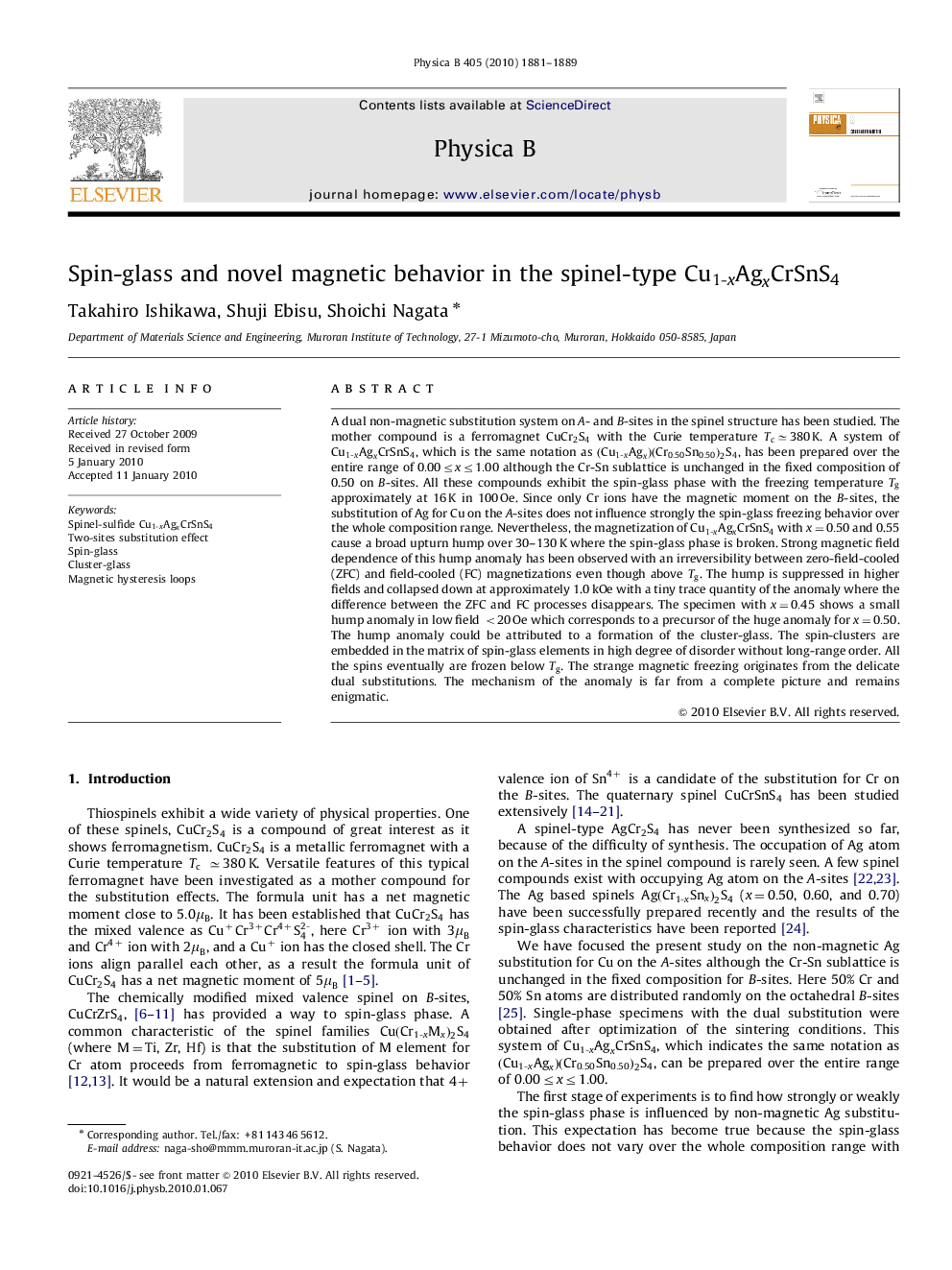| Article ID | Journal | Published Year | Pages | File Type |
|---|---|---|---|---|
| 1812164 | Physica B: Condensed Matter | 2010 | 9 Pages |
A dual non-magnetic substitution system on A- and B -sites in the spinel structure has been studied. The mother compound is a ferromagnet CuCr2S4CuCr2S4 with the Curie temperature Tc≃380K. A system of Cu1‐xAgxCrSnS4Cu1‐xAgxCrSnS4, which is the same notation as (Cu1‐xAgx)(Cr0.50Sn0.50)2S4(Cu1‐xAgx)(Cr0.50Sn0.50)2S4, has been prepared over the entire range of 0.00≤x≤1.000.00≤x≤1.00 although the Cr-Sn sublattice is unchanged in the fixed composition of 0.50 on B -sites. All these compounds exhibit the spin-glass phase with the freezing temperature TgTg approximately at 16 K in 100 Oe. Since only Cr ions have the magnetic moment on the B-sites, the substitution of Ag for Cu on the A -sites does not influence strongly the spin-glass freezing behavior over the whole composition range. Nevertheless, the magnetization of Cu1‐xAgxCrSnS4Cu1‐xAgxCrSnS4 with x=0.50x=0.50 and 0.55 cause a broad upturn hump over 30–130 K where the spin-glass phase is broken. Strong magnetic field dependence of this hump anomaly has been observed with an irreversibility between zero-field-cooled (ZFC) and field-cooled (FC) magnetizations even though above TgTg. The hump is suppressed in higher fields and collapsed down at approximately 1.0 kOe with a tiny trace quantity of the anomaly where the difference between the ZFC and FC processes disappears. The specimen with x=0.45x=0.45 shows a small hump anomaly in low field <20Oe which corresponds to a precursor of the huge anomaly for x=0.50x=0.50. The hump anomaly could be attributed to a formation of the cluster-glass. The spin-clusters are embedded in the matrix of spin-glass elements in high degree of disorder without long-range order. All the spins eventually are frozen below TgTg. The strange magnetic freezing originates from the delicate dual substitutions. The mechanism of the anomaly is far from a complete picture and remains enigmatic.
